20 May 2024
The 5th Edition of the Brazilian Tables for Poultry and Swine
On March 26, the 5th edition of the Brazilian Tables for Poultry and Swine was released in Viçoca, Minas Gerais, The 5th edition was dedicated in memory of Professor Luiz Fernando Teixeira Albino, one of the editors of all previous editions, who passed away last February 13. Â
This document was mainly developed at the Federal University of Viçosa but includes important contributions of researchers from São Paulo State University (UNESP), the Federal University of ParaÃba, and the Federal University of Lavras. Â
- additional reference for practical feed formulation of monogastric animals worldwide. Â
âIn a couple of articles, we will summarize the main contents of this publication to stimulate readers to obtain the publication and evaluate its values and equations.Â

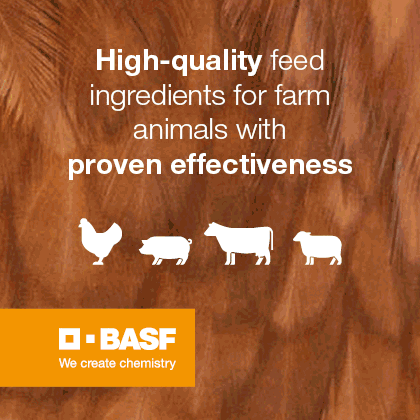
To simplify the reading of this article, most of the references were omitted and all can be found in the 575 pages of this well-documented book. These Tables can be acquired with calculators or software to apply the mathematical models used.Â
âThis publication includes a description of nutrient composition, amino acid (AA) digestibility, and . However, it can be a reference for other countries with feed ingredients of similar origin or characteristics. It also contains the methodologies, equations, and diverse examples to estimate the energy content of feedstuffs, and nutritional requirements for broilers, broiler breeders, layers, and swine. In the present article, we will start by describing the feedstuffs information and the nutritional requirements.Â
Nutritional and Energy Value of Feed Ingredients
These tables contain a description of Brazilian feed ingredients. This edition contains two categories of corn grain and soybean meal in addition to the average values. The two additional corn categories were calculated using the average dry matter value plus or minus one standard deviation. The soybean meals included higher or lower content of hulls. Â
Phosphorus content and phytaseÂ
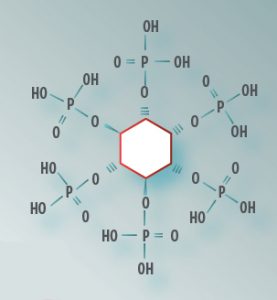 The phytate phosphorus ( content of Brazilian plant feedstuffs was determined in addition to total P, and the non-phytic P was considered as available P. In animal feedstuffs, the P availability was considered 100%, except for meat and bone meals which had 90% P availability. Â
The phytate phosphorus ( content of Brazilian plant feedstuffs was determined in addition to total P, and the non-phytic P was considered as available P. In animal feedstuffs, the P availability was considered 100%, except for meat and bone meals which had 90% P availability. Â
- Values of standardized digestible P content determined in broiler and swine in grower and finisher phases were provided.
- To estimate standardized digestible P values, the authors used endogenous P excretion values of 0.138 mg P/kg of dry matter intake for poultry and 0.258 mg P/kg of dry matter for pigs.Â
- The amount of P that phytases can make available for broilers and pigs was estimated using meta-analyses. The average P equivalence (available and digestible P) values of fungal and bacterial phytases were estimated according to the inclusion level (FTU/kg) from 250 to 1,500 FTU/kg. Linear responses and equations are provided, but it is important to remember that several non-linear responses have been reported.Â
Energy valuesÂ
Two metabolizable energy (ME) values for poultry are presented for each feedstuff. One for general poultry and another for mature poultry or It was considered that hens metabolize better (0.3 kcal/g ME more) the nitrogen-free extract and crude fiber components. Net energy (NE) values for poultry feedstuffs were also calculated. The coefficients obtained by Carré et al. (2014). This considers 76% for digestible protein and 80% for digestible starch, considered as digestible nitrogen-free extract, and 90% for digestible EE.Â
Digestible energy (DE) and ME values for swine feedstuffs were determined in growing pigs with weights between 20 and 75 kg. The NE values were calculated using the Noblet et al. (1994) equation. Two values of DE and ME are presented for growing pigs and sows.Â
Equations to estimate ME and NE for poultry feedstuffs, and DE, ME, and NE values for growing pigs and sows were included to correct these energy values according to the chemical composition. There are digestibility coefficients of EE for poultry and swine, nitrogen-free extract for poultry, and organic matter for swine for some feedstuffs that can help with the estimation of energy values. Â
Additional description of feed ingredients
One hundred feed the practical recommended inclusion levels are presented for each feeding phase. The non-starch polysaccharide content of some feedstuffs is presented using the methodology of Englyst et al. (1994) and presented as-fed.Â
Nutrient Requirements for
In these Tables, the energy and AA nutrient requirements were determined by using integrated factorial and empirical models. The models presented use Gompertz equations to estimate average body weight (BW) and daily body weight gain (BWgain) to describe growth rates.Â
Energy and amino acid requirementsÂ
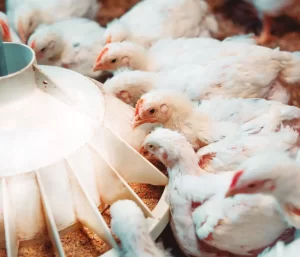 Using the estimated growing data, models estimate daily ME and standardized ileal digestible (SID) lysine requirements. The factorial models consider the ME for maintenance and production. The coefficients are different for males and females, but the calculations are similar. The ME for maintenance was 113 kcal/kg BW0.75 and the ME for growth was estimated with a quadratic equation related to BW. The basic equations to estimate ME requirements for broilers of high performance are:Â
Using the estimated growing data, models estimate daily ME and standardized ileal digestible (SID) lysine requirements. The factorial models consider the ME for maintenance and production. The coefficients are different for males and females, but the calculations are similar. The ME for maintenance was 113 kcal/kg BW0.75 and the ME for growth was estimated with a quadratic equation related to BW. The basic equations to estimate ME requirements for broilers of high performance are:Â
ME males = (113*BW(kg)0.75) + ((2098 + 961.31*BW â167.87*BW2)*BWgain (kg/bird/d))Â
ME females = (113*BW(kg)0.75) + ((2158.2 + 1154.4*BW â 227.78*BW2)*BWgain (kg/bird/d))Â
![]() Corrections for temperature were proposed. Additionally to ME, the NE levels of broiler feeds were mentioned in this edition.The requirements are calculated for broiler flocks of high performance. For broiler flocks with standard performance, it is necessary to increase the requirements by 4%. The correction for environmental temperature (T) effects above thermoneutral (TN)
Corrections for temperature were proposed. Additionally to ME, the NE levels of broiler feeds were mentioned in this edition.The requirements are calculated for broiler flocks of high performance. For broiler flocks with standard performance, it is necessary to increase the requirements by 4%. The correction for environmental temperature (T) effects above thermoneutral (TN)
T is= 2.6*BW0.75 (TN â T)
It was considered TN 23 oC between 17-33 days of age, and 20 oC between 34-56 days.
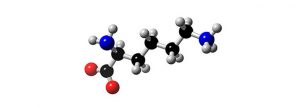 The SID Lys requirement for broiler maintenance was determined as 0.045 mg of SID Lys per kg of metabolic weight (W0.75). The SID Lys requirements for production were based on a compilation of results of dose-response experiments evaluating diverse Lys levels. Weekly and total experimental period data were considered to calculate the SID Lys intake and the optimum levels or responses observed. Then, requirements for maintenance and growth were calculated. The total Lys requirement is considered an SID Lys of 90.7%.Â
The SID Lys requirement for broiler maintenance was determined as 0.045 mg of SID Lys per kg of metabolic weight (W0.75). The SID Lys requirements for production were based on a compilation of results of dose-response experiments evaluating diverse Lys levels. Weekly and total experimental period data were considered to calculate the SID Lys intake and the optimum levels or responses observed. Then, requirements for maintenance and growth were calculated. The total Lys requirement is considered an SID Lys of 90.7%.Â
These are the equations to estimate the SID Lys requirement of broilers with high performance:Â
SID Lys Req. male (g/day) = (0.045*BW0.75) + ((14.574 + 2.7554*BW â 0.286*BW2)*BWgain (kg/bird/day))Â
SID Lys Req. female (g/day) = (0.045*BW0.75) + ((14.143 + 4.0337*BW â 0.5709*BW2)*BWgain (kg/bird/day))Â
The standard performance is calculated by increasing these values by 4%.Â
The requirements for other essential AAs were calculated by applying the ideal protein concept (Table 1). Three growing phases (1 to 17, 17 to 35, and 35 to 56 days of age) were considered. This is an update taking into consideration advances in genetic selection. The total sulfur AA requirements were established to ensure that at least 55% corresponds to methionine. In the same way, 55% of the phenylalanine + tyrosine should correspond to phenylalanine. But, glycine and serine requirements are presented together since these two AAs are interchangeable.Â
Table 1. Ideal protein ratios used in the Brazilian Tables 2024. Amino acid / Lys ratio (%) used to estimate amino acid requirements (Table 2.20 page 260)Â
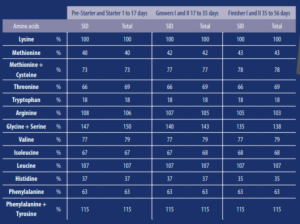
Low crude protein dietsÂ
These tables include recommendations for the formulation of low crude protein (CP) diets. A 50% ratio between essential Nitrogen (Ne) or essential AAs and Total N was recommended. The Ne was determined by calculating digestible essential N and total essential N, considering the N content of essential AAs. The essential AAs considered were Lys, Met, Thr, Trp, Arg, Gly+Ser, Val, Ile, Leu, His, and Phe. Additionally, it was recommended to meet the minimum digestible protein requirement to prevent the metabolic use of Ne to synthesize nonessential AA, which impairs broiler performance.Â
The digestible protein requirement and the total CP requirement can be estimated based on the SID Lys requirement. A proportion of 5.5 or 6.0% can be used to calculate total CP and digestible protein requirements, respectively. For example for a broiler flock with an estimated 1.22 SID Lys requirement, the total CP requirement will be 22.18% (1.22 x 100/5.5) and the digestible protein requirement will be 20.33 (1.22 x 100/6.0).  Â
 The established considering the endogenous P losses of 0.026 W0.75. The P requirements for growth were determined with the results of dose-response experiments for three production phases. The available P requirement is estimated with coefficients of 6, 5, and 4 for 1 to 21 d, 22 to 42 d, and 43 to 56 d, respectively. The digestible P requirements had coefficients of 5.4, 4.5, and 3.7 for each of the periods. Authors recommend using digestible P requirements more than available non-phytic P. The dietary available and digestible P content are expressed in percentage as a function of feed intake.Â
The established considering the endogenous P losses of 0.026 W0.75. The P requirements for growth were determined with the results of dose-response experiments for three production phases. The available P requirement is estimated with coefficients of 6, 5, and 4 for 1 to 21 d, 22 to 42 d, and 43 to 56 d, respectively. The digestible P requirements had coefficients of 5.4, 4.5, and 3.7 for each of the periods. Authors recommend using digestible P requirements more than available non-phytic P. The dietary available and digestible P content are expressed in percentage as a function of feed intake.Â
Available or Digestible P requirement (g/day) = (0.026*BW(kg)0.75) + Coeff. P by period * BWgain (kg/day)Â

The total calcium (Ca) requirement is estimated by multiplying by the ratios (2.10 and 2.32) of available and digestible P. Â
Sodium, potassium, and chlorine requirements (mg/bird/day) were calculated as a function of broiler age, and the value obtained was multiplied by dietary ME content expressed in Mcal.Â
Requirements for replacement pullets, layers, and broiler breedersÂ
Energy and amino acid requirementsÂ
The ME requirements were also calculated with similar factorial models. The ME maintenance requirement was the same as used in broilers 113 kcal ME per kg BW0.75 and 92.3 kcal NE. The ME requirements for growth are estimated with quadratic functions that vary for each bird category due to the differences in body chemical composition. The ME requirements for egg production were calculated as 2.4 kcal per gram of egg mass for leghorn and brown .Â
The equations used to estimate ME requirements for replacement Â
ME (kcal/day) 1 to 15 weeks = (113*BW(kg)0.75) + ((3.77 + 1.65*BW â 0.923*BW2)*BWgain (kg/bird/d))
ME (kcal/day) 16 to 18 weeks = (113*BW(kg)0.75) + ((3.77 + 1.65*BW â 0.923*BW2)*BWgain (kg/bird/d)) + (2.4*Egg mass (g/bird/day)
The equations to estimate NE requirements for replacement pullets of laying hens are:Â
NE (kcal/day) 1 to 15 weeks = (92.3*BW(kg)0.75) + ((2.40 + 1.36*BW â 0.706*BW2)*BWgain (kg/bird/d))
NE (kcal/day) 16 to 18 weeks = (92.3*BW(kg)0.75) + ((2.40 + 1.36*BW â 0.706*BW2)*BWgain (kg/bird/d) + (1.54*Egg mass (g/bird/day))
The equations to estimate ME and NE of laying hens are:Â
ME (kcal/bird/day) = (113*BW(kg)0.75) + (6.68*BWgain (kg/bird/d)) + (2.4*Egg mass (g/bird/day))Â
NE(kcal/bird/day) = (92.3*BW(kg)0.75) + (4.34*BWgain (kg/bird/d)) + (1.54*Egg mass (g/bird/day))Â
ME (kcal/day) 16 to 18 weeks = (113*BW(kg)0.75) + (4.0 + 0.56*BW)*BWgain (kg/bird/d)) + (2.4*Egg mass (g/bird/day))Â
 NE (kcal/day) 1 to 15 weeks = (92.3*BW(kg)0.75) + (2.24 + 0.486*BW)*BWgain (kg/bird/d))Â
NE (kcal/day) 16 to 18 weeks = (92.3*BW(kg)0.75) + (2.24 + 0.486*BW)*BWgain (kg/bird/d) + (1.54*Egg mass (g/bird/day))Â
The equations to estimate ME and NE of broiler breeder hens are:Â
ME (kcal/bird/day) = (113*BW(kg)0.75) + (7.62*BWgain (kg/bird/d)) + (2.4*Egg mass (g/bird/day))Â
NE(kcal/bird/day) = (92.3*BW(kg)0.75) + (3.58*BWgain (kg/bird/d)) + (1.54*Egg mass (g/bird/day))Â
The corrections for environmental T are similar for all bird categories. Temperature above the TN affects ME for maintenance = 113 + (0.88 x (T â TN)). In T below the TN the correction is = 113 + (6.73 x (TN â T))Â
The equations to estimate ME and NE for broiler breeder pullets are:Â
ME (kcal/day) 1 to 15 weeks = (113*BW(kg)0.75) + (4.0 + 0.56*BW)*BWgain (kg/bird/d))Â
The AA requirements were also calculated with the same methodology used for broilers, but the ideal protein profiles are different for pullets, laying hens, and broiler breeders. Those ratios of each AA related to SID Lys levels are described in several Tables in this new publication.Â
SID Lys Req. 1 to 15 weeks (g/bird/day) = (45.1*BW0.75) + ((24.13 + 14.60*BW â 17.44*BW2)*BWgain (kg/bird/day)Â
SID Lys Req. 16 to 18 weeks (g/bird/day) = (45.1*BW0.75) + ((24.13 + 14.60*BW â 17.44*BW2)* BWgain (kg/bird/day) + (9.46*Egg mass (g/bird/day))Â
The equation to estimate the SID Lys of table-egg laying hens is:Â
SID Lys Req. (g/bird/day) = [(45.1*BW0.75) + ((55 + 12 * BWgain (kg/bird/day))/0.80) + (11.5*Egg mass (g/bird/day))]/1000Â
The equations to estimate the SID Lys of broiler breeder pullets are:Â
SID Lys Req. 1 to 15 weeks (g/bird/day) = [(45.1*BW0.75) + (14.7 + 5.3*BW â 0.444*BW2)*BWgain(kg/bird/day)]/1000Â
SID Lys Req. 16 to 18 weeks (g/bird/day) = [(45.1*BW0.75) + (14.7 + 5.3*BW â 0.444*BW2)*BWgain(kg/bird/day)] + (9.46*Egg mass (g/bird/day))]/100Â
The equation to estimate the SID Lys of broiler breeder hens is very similar to laying hens, but the requirement for egg production is higher:Â
SID Lys Req. (g/bird/day) = [(45.1*BW0.75) + ((55 + 12 * BWgain (kg/bird/day))/0.80) + (14.5*Egg mass (g/bird/day))]/1000Â

The Brazilian tables also have the description to estimate the requirements of minerals of table-egg and broiler breeder hens. There are complete descriptions of nutritional requirements for Japanese and European quails, also based on factorial models for Energy and AAs.Â
In the next article, we will describe the nutrient requirements for Swine estimated in this new version of the Brazilian Tables. For those not familiar with the use of these equations the Book of the Brazilian Tables has multiple examples, and the calculators can aid in understanding.
We hope these summaries contribute to the awareness, understanding, and motivate the study of this excellent source of nutritional information. Â
